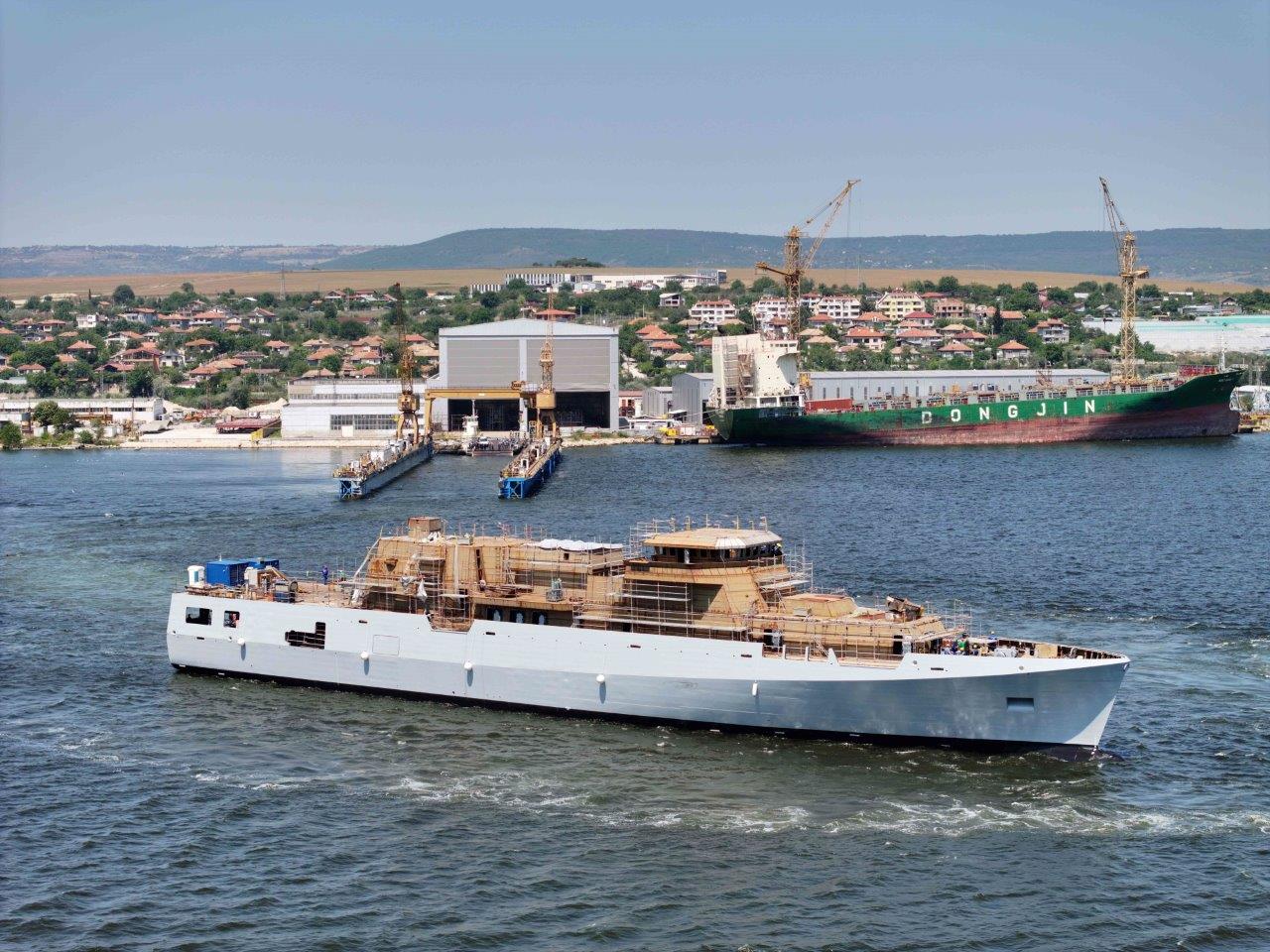My personal suspicion would be that either the CEA radar
You would have to basically design a unique mast and CEA installation. They are smaller ships than Anzacs, so trying to squeeze a Anzac mast onto it would cause huge issue. You could do it, and then in 10 years when its ready and you have a land base integration all complete, retrofit it. Given the type of ship it is, and that we don't already have a mast ready to go for the OPV80 Arafuras, and then on ships like Canberra, which could take advantage of a CEA radar, we fitted giraffe, I think the logical choice would keep it with a Giraffe radar and maybe a CEAMOUNT type array.
From the linked article, it mentions several potential systems which it could be equipped with
Lurrsens offer is based around what they are building for Bulgaria. So I do believe the engineering work is done on the design. They cut steel back in 2021, and are expected delivery in 2025+6.
The first of two MMPV 90 corvettes for the Bulgarian Navy was launched at the MTG Dolphin Shipyard in Varna.

www.navalnews.com
Its not the dumbest proposal to ever be mooted. Its from an existing builder, at an existing yard, based off an existing design, integrated mostly with systems that the RAN would probably live with.
However you dig deeper, and its only 8 VLS, of MICA, so much like the Anzac, depending on top weight you may not get 8VLS of quad packed ESSM (32), probably not 16 vls (64). RBS isn't of interest to RAN, but NSM could be fitted, and the 35mm gun may also not be of interest and may have to be ditched in RAN application again with top weight. So now we are down to a pretty light fitted OPV. Is that what we want?
Then if you want to extend the hangar, well we are back to modifying a design significantly. We already borked the OPV80 build, by changing the specs, and specing a 40mm gun.
Does a combat OPV or a corvette, or a gun boat, or what ever, what we should be focused on? Maybe it can do low risk stuff in completely uncontested water in the indo and the pacific. But what is the exact capability we are seeking? What are the threats we are trying to manage on this platform?
Lurrsen is applying a bit of salesmanship to the current situation.
Luerssen Australia has announced it has appointed Tammar Contractors, a majority Indigenous-owned company, to provide yard services for the Arafura Class Offshore Patrol Vessel Program.

www.australiandefence.com.au
I can see them breathing heavily. Its an existing supplier, selected by the previous government, now in opposition. Its got "64% local content and rising!", its based off a design that is basically in the water now, that has been probably 80% spec to something the RAN could live with. Existing builders, existing yard, family design we are already building and will have 12 of, won't interfere with Hunter class, and a pretty low spec build. And we are desperate. We know the Anzacs are falling apart and the Hunters aren't on time and we have a decade of nearly every platform out of the water. If it goes pear shaped, blame the previous government for selecting OPV80 and Lurrsen, and because of that fact, I would imagine opposition would likely shut up about the whole thing. Its a low risk option, existing jobs are kept, existing suppliers are happy, and something pops out the other end. To even select another builder costs ~$1b and 5 years in a program that was only ~$2billion and 5 years to begin with.
Which just reminds everyone why its important to select the right platform, the right cooperate structure, the right contract outcomes, at the beginning. Really Sea1180 should have been a bit clearer about how related platforms are going to work, and what are our options if geopolitical threats change. There were other more capable ships.
Deep dive into Sea 1180's OPV - Australian Defence Magazine
I do think the government would find it very hard to attempt to change socks and shoes while running in a marathon.



